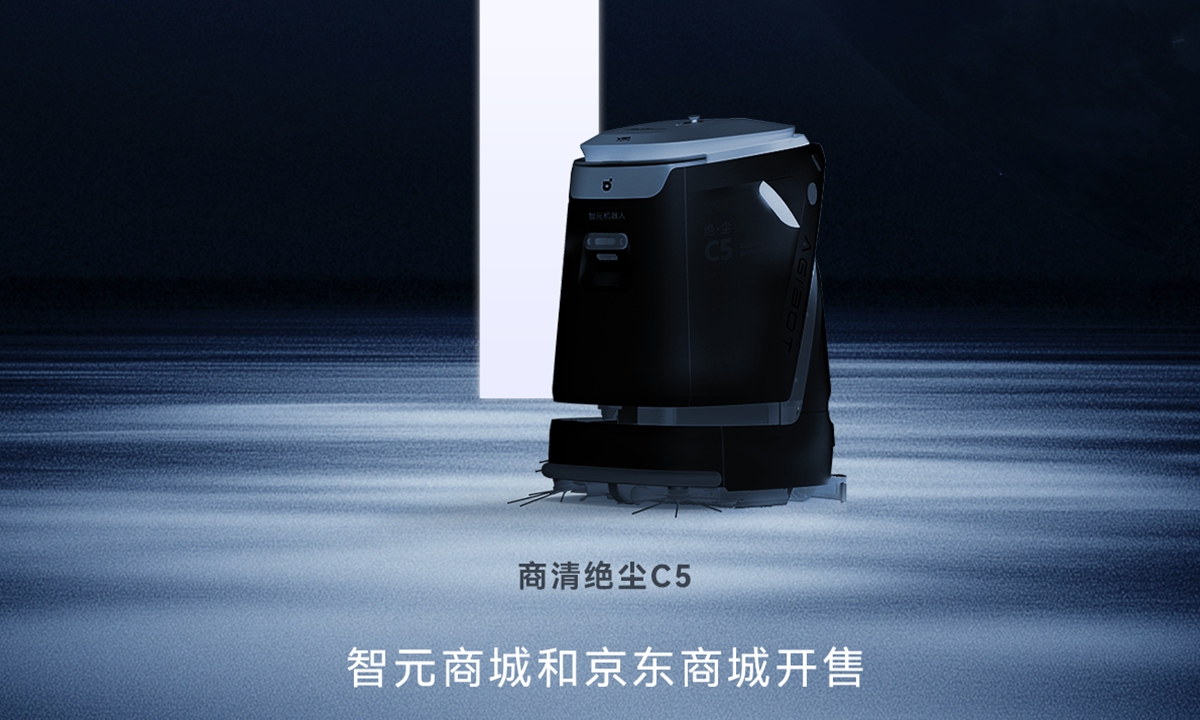政府新闻
随着商业化势头的增强,AgiBot 开始销售人形机器人 2025-08-18

A view of Shangqing Juechen C5 commercial cleaning robot produced by AgiBot. AgiBot on August 17 unveils its full product lineup, including the OmniHand dexterous end-effector and the Shangqing Juechen C5 commercial cleaning robot. Photo: Screenshot of AVIC's poster
AgiBot, a leading Chinese robotics firm, announced last Sunday that its full product lineup, including the OmniHand dexterous end-effector and the Shangqing Juechen C5 commercial cleaning robot, will be available on its e-commerce platform and JD.com starting from Monday.
This development came as China's humanoid robotics industry is accelerating its transition from demonstration to practical application, with major companies securing orders worth millions of yuan and launching new products to meet the growing market demand.
An expert viewed it as a key step in the company's brand building and market expansion strategy, saying this step underscores AgiBot's confidence in the industry's potential, and will encourage more players to invest in research and development.
A week ago, Zhiyuan Innovation (Shanghai) Technology signed a deal worth several million yuan with Miaoyang Fulim Precision Machining Co to deploy nearly 100 of its Expedition A2-W wheeled general-purpose robots in Fulim's factories, according to a news release on the company's official website.
It marked China's first large-scale commercial contract for industrial embodied robots and the world's first significant deployment in smart manufacturing scenarios, marking a pivotal shift from technical validation to scalable commercial use, the release said.
The Expedition A2-W, designed for flexible smart manufacturing, supports tasks such as palletizing, material handling and loading and unloading across various industrial settings.
"The growing orders reflect the growing maturity of China's humanoid robotics technology and the trend of commercial adoption. It also signals intensifying market competition, which will drive companies to sharpen their competitive edge," Wang Peng, an associate research fellow at the Beijing Academy of Social Sciences, told the Global Times last Sunday.
This trend extends beyond AgiBot. On August 12, another robotics firm, SquareBot, announced it had received nearly 1,000 orders for its general-purpose robots, targeting industrial and public service applications. These units are already operational in factories owned by Dongfeng Liuzhou Motor and Jingneng Microelectronics, with plans for deployment at Shanghai Hongqiao Airport, thepaper.cn reported on Wednesday.
On the same day, UBtech announced that its industrial humanoid robots are moving into regular deployment, with plans to deliver 500 this year to auto and 3C semiconductor clients, primarily in the auto sector, according to media reports.
These developments follow the close of the 2025 World Robot Conference on August 12, which featured the inaugural "E-Town Robot Consumer Festival." The event, including a Robot World expo and robot "4S stores," recorded sales of 19,000 units worth more than 200 million yuan, the Xinhua News Agency reported.
China's robotics market is set to grow at an annual rate of 23 percent to $108 billion by 2028 from $47 billion in 2024, solidifying the country's dominant position in the fast-developing sector, according to a research note published by Morgan Stanley in July, South China Moring Post reported.
Wang said that large-scale orders are boosting market confidence, driving faster industrial and commercial deployment. "Humanoid robots must find real-world applications to secure genuine orders," he noted.
China's market potential for robot applications is enormous, driven by demographic shifts, rising labor costs, and the rise of the "lazy economy," with demand expanding across healthcare, eldercare, household services, and education and entertainment, according to Wang.
Policy support is also strengthening, with local governments further supporting this expansion through initiatives focused on technological innovation, industrial clustering and application demonstrations. The recent E-town Robot Consumer Festival introduced subsidies of up to 1,500 yuan for individual purchases of robot products and up to 250,000 yuan for corporate buyers.
However, challenges remain. Wang noted that with technology pathways still diverging and safety standards yet to take shape, significant hurdles remain before robots can be widely adopted in practice.
Xu Xiaolan, president of the Chinese Institute of Electronics, predicts that humanoid robots will see significant improvements in autonomous capabilities within the next three to five years, according to Xinhua.
She emphasized that future development will prioritize collaboration, standardization, and the establishment of unified data annotation standards and sharing mechanisms to enable efficient data flow across diverse application scenarios.
Source: Global Times
